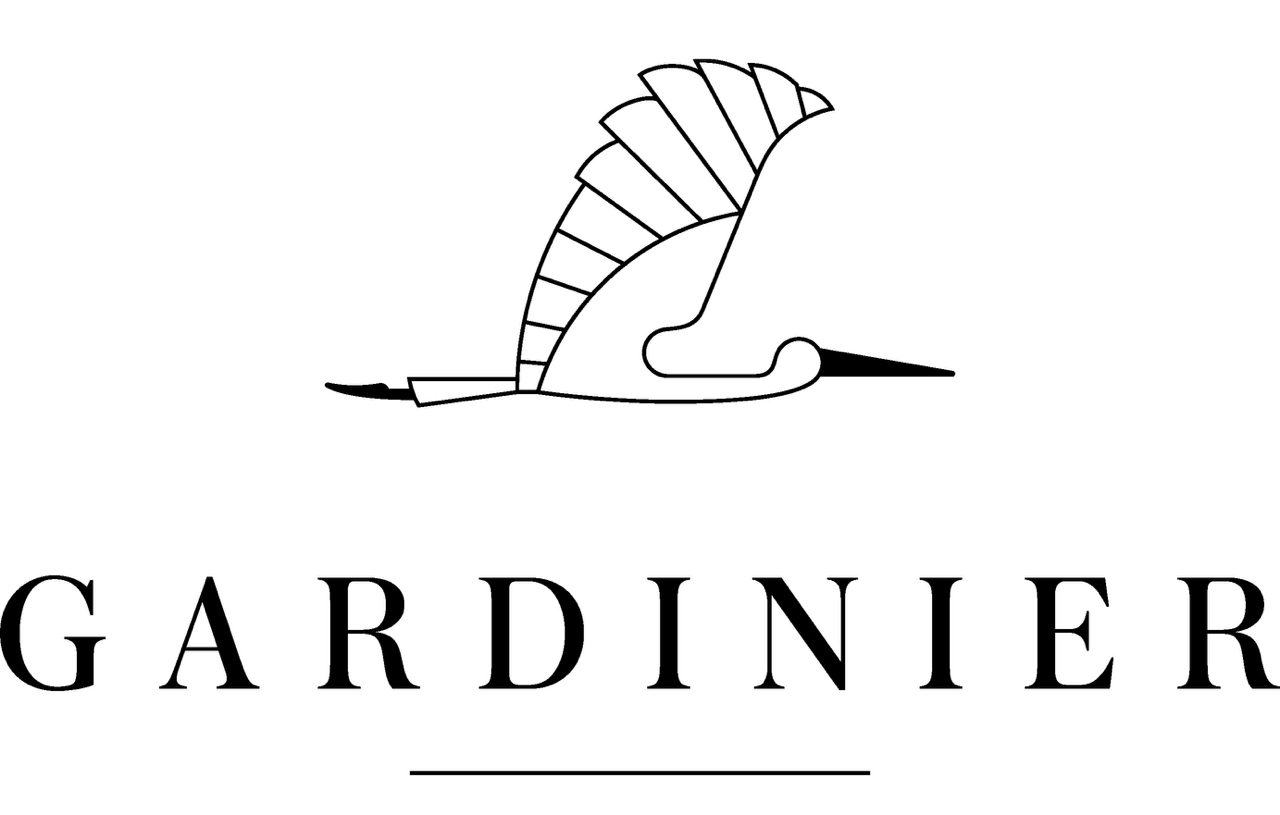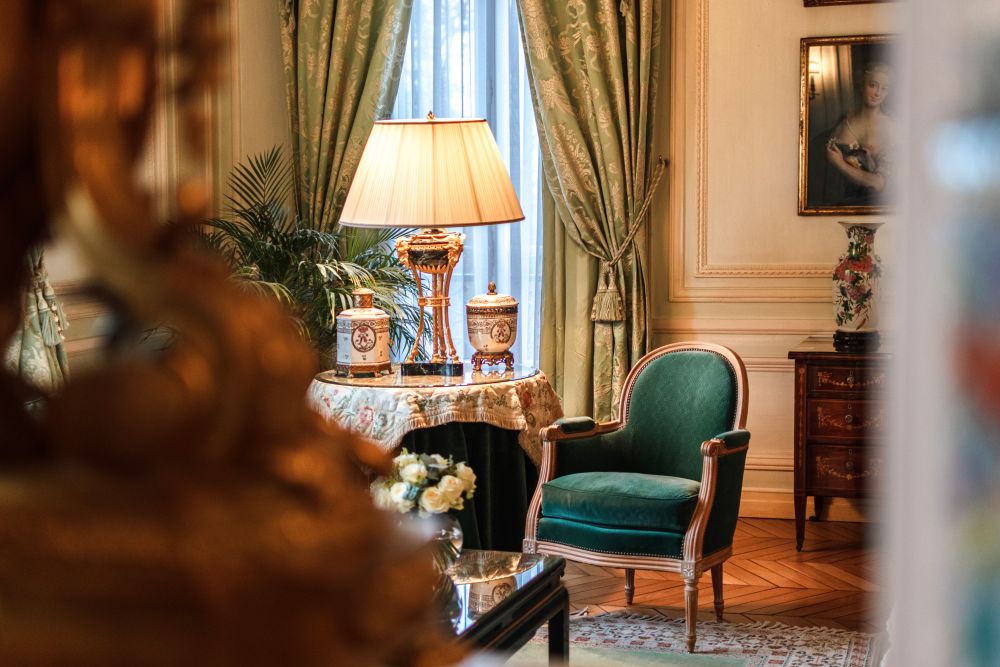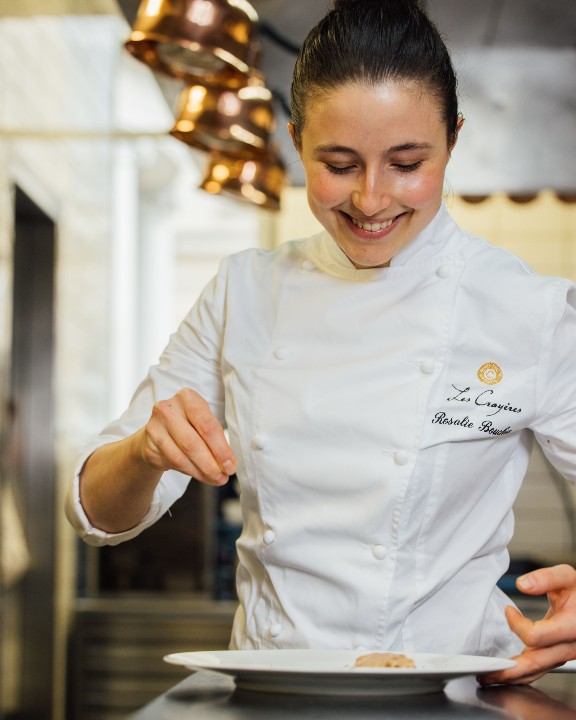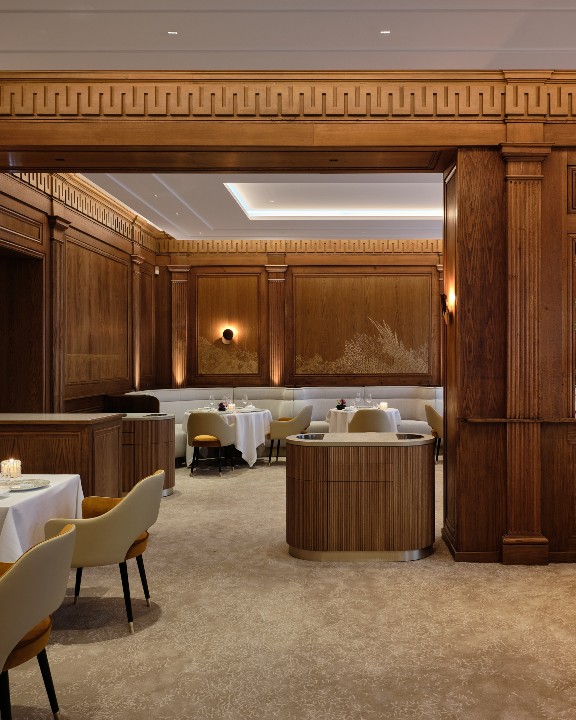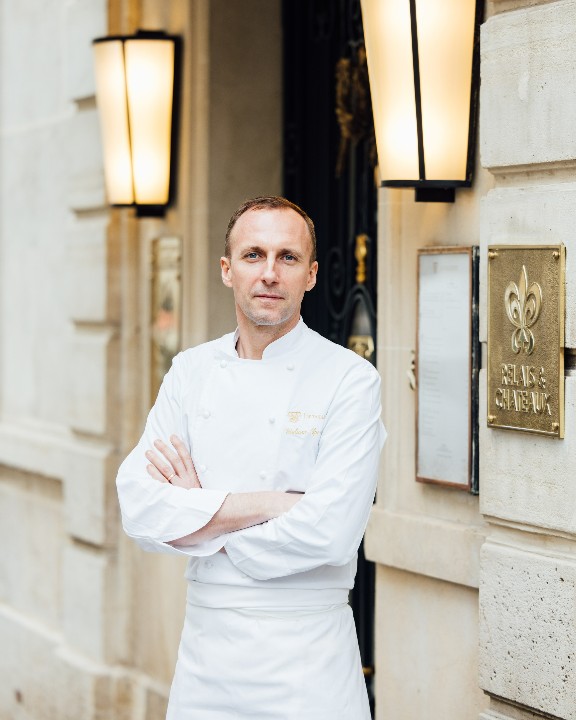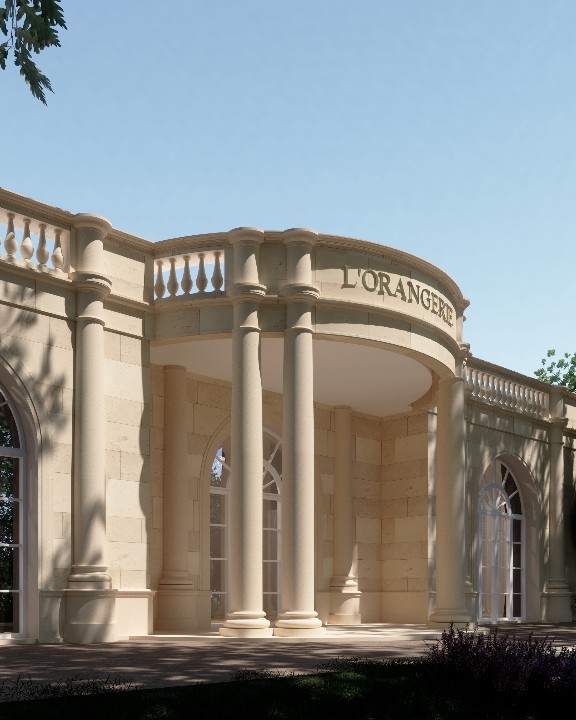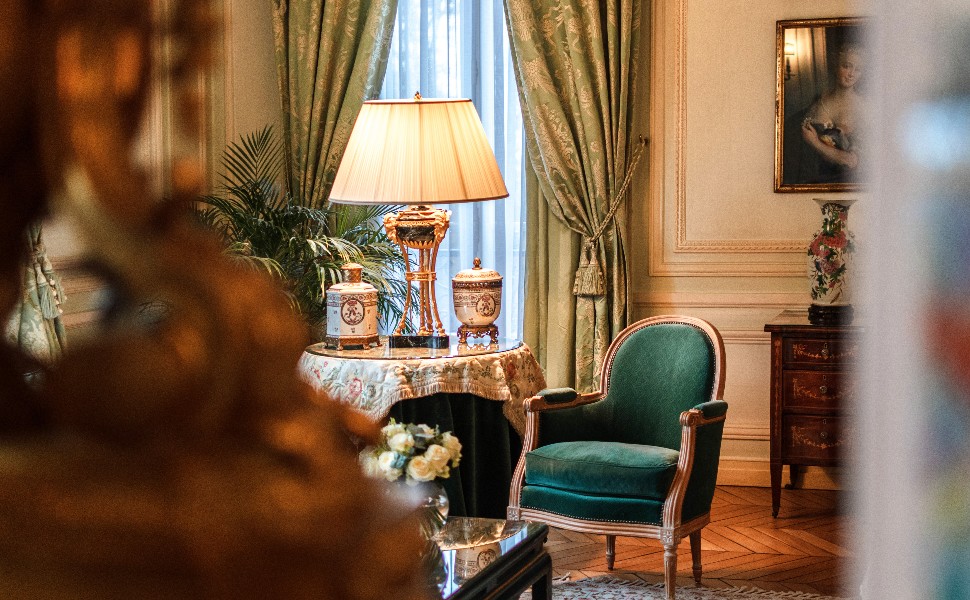
Interior architects Pierre-Yves Rochon, Yann Montfort and Fabrizio Casiraghi have succeeded in preserving the soul of the Maisons Gardinier while endowing them with a contemporary identity.
Thierry, Stéphane and Laurent Gardinier have great admiration for French heritage. A passion shared with interior architects Pierre-Yves Rochon, Yann Montfort and Fabrizio Casiraghi. Their combined talents have led to remarkable interpretations of Maisons Gardinier's heritage, creating an enduring bond between past and present.
Forty years ago, Xavier Gardinier entrusted the transformation of Domaine Les Crayères to a promising young architect, Pierre-Yves Rochon. "To put it simply, we created a boutique hotel before its time. Each room was different, with its own decor. Which, in those days, did not exist," says the man who turned the Polignac family's former home into one of the most elegant addresses symbolizing the French art of living. "Domaine Les Crayères corresponds to this image of France, classical, refined, admired by all." Pierre-Yves Rochon engaged the elite of French know-how. Silversmiths, cabinetmakers, marble experts… the finest practitioners of arts-and-crafts worked here. "The challenge was to reconcile the ambiance of a residence steeped in history with innovations and modern luxury." The Domain showcases French classicism, cultivated by very few hotels. Wallpaper and patterned fabrics unearthed in archives by Pierre Frey, Dedar velvets, Veraseta silk, upholstery by Lelièvre… Today's greatest names are found here. A "château" style subtly cultivated, for a memorable experience in a city where kings were once crowned.
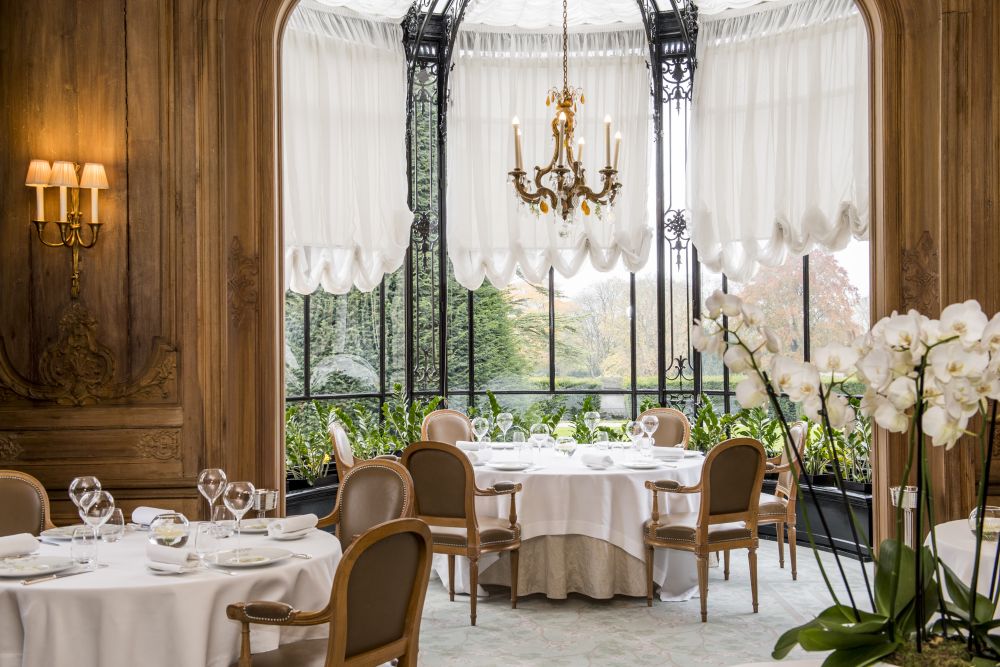
Hosted by the old part of Le Duc de Morny's former mansion, Le Taillevent is one of the great restaurants waving the flag of French gastronomy. "A part of Parisian history that had to be respected," explains interior architect Yann Montfort. His task was to emphasize the splendour of the original decor - hewn stone, pilasters, pediments - while imbuing it with vibrant modernity. A challenge won hands down thanks to plays on contrasts and textures. Gilded copper, bronze-coloured straw clay, embossed leather and velvet confer with old woodwork, creating a lavish, warm atmosphere. Exemplified by straw marquetry screens by Lison de Caunes sheltering tables in the Salle Trianon, or the Solène Eloy fresco, a poetic reinterpretation of the "Viandier" by Guillaume Tirel aka Taillevent (first French recipe book) adorning the wood panelling in the Salle Lamennais. "Elegance and refinement are born of a blend of styles," concludes Yann Montfort, endowing Le Taillevent with renewed conviviality and a decidedly contemporary soul.
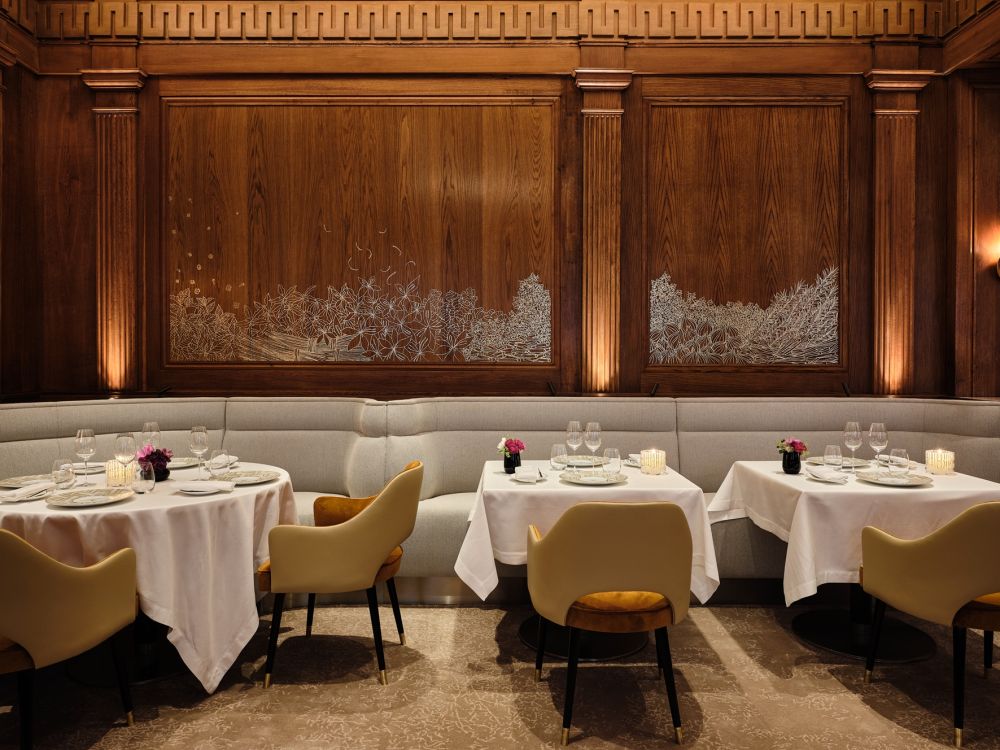
Interior architect Fabrizio Casiraghi has reawakened the Drouant's decor, blending Parisian chic with Mediterranean flair. Travertine mosaic floors, walnut wood panelling, lacquered walls…, the Art Deco style associated with Jacques-Émile Ruhlmann in the 1920s remains intact. The main room and winter garden now feature armchairs inspired by one of his original sketches, enhanced by effective mustard-coloured velvet signed Pierre Frey. The ceiling with its shells and shellfish, dear to Jean Cocteau, and the spectacular staircase with its elegant wrought-iron handrail, witnessing annual announcements of the Renaudot and Goncourt Prizes, have lost none of their splendour. The addition of a chandelier in Art Deco style endows the decor with a touch of contemporary sophistication. As a sublime final touch, artworks are dotted around the Drouant decor. A Patrick Guidot painting evoking the Goncourt Prize's famous red ribbon is discovered at the entrance to the restaurant, while Roberto Ruspoli frescos adorn walls in the private salons on the upper floor. They celebrate both the freedom of the press and Marcel Proust's novel À l'ombre des jeunes filles en fleurs, prize-winner in 1919.
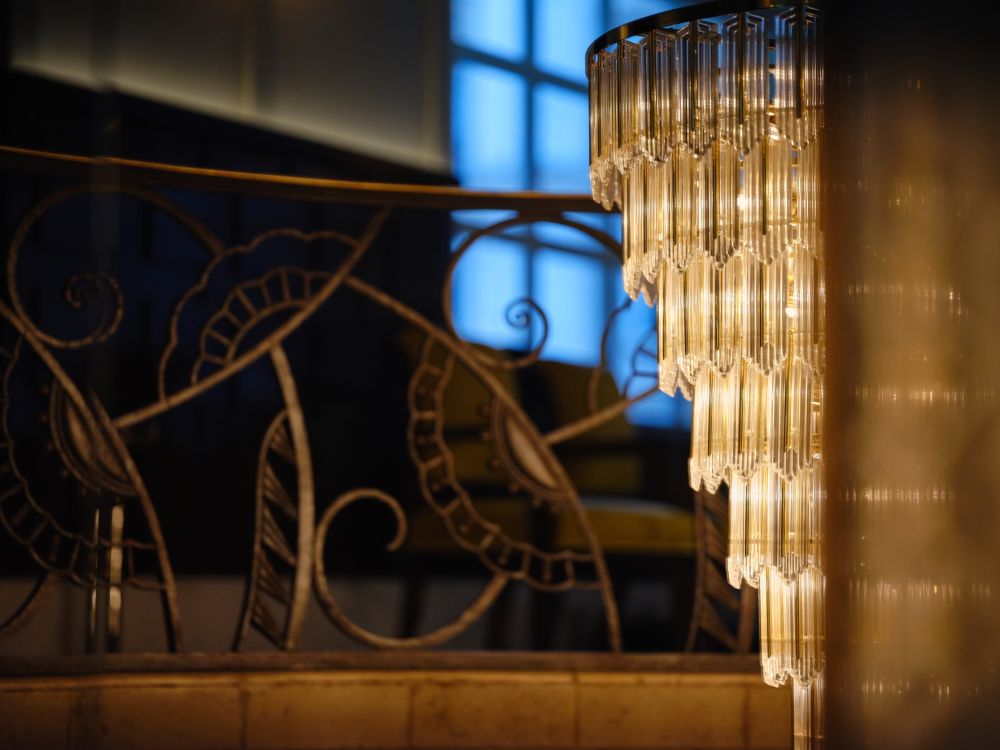
To contact one of Our Houses, please click on the bell.

